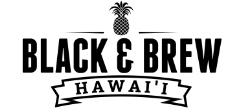Have you ever wondered where that distinct flavor of a malted beer comes from? Perhaps you’ve taken a sip of beer, and tasted a hint of flowers, or a Christmas tree, or maybe an orange. Or maybe you heard someone say, “This one has prominent earthy tones,” and then thought to yourself, what does that even mean?
Beer is made up of many ingredients, and the agents that provide the beer’s distinct flavor comes from a hop flower found on the hop tree. These flowers look like pine cones, and the tree they grow on is called Humulus Lupulus (sounds small kine Hawaiian, ah? Eh, try get da humulus lupulus, I went see ‘em at da kines). The coned-shaped flower plays an essential role to creating the beer’s flavor and its aroma. The bitterness of hops balances out the sweetness from malt sugars. Whole-leaf (dried hop cones), extract, pellets, or fresh hops (right from the field, making a “grassy” flavor) are types of hops used for brewing.
The location of where the tree is grown is an important determinant of its taste. Hop tastes will vary from area to area. For example, traditional European hops are known as Noble Hops. The noble hops are further divided into different groups and all have different and distinct aromas, most famously known for its tinge of spiciness. On the other hand, American hops are famous all over the world for its wide variety of taste, which it imparts in the final product. The most commonly associated flavor with the American hop is citrus. #merica
Regarding American beer, and PBR is not the only American Beer, the Cascade hop is the most famous of them all, commonly associated as the hop that brought forward the ‘Beer Revolution’ in America. The Cascade hop brings the tinge of grapefruit in your beer. It’s just too good.
But hops aren’t only used for flavor. They also act as a stability agent during the brewing process. Looking at the chemical components of hops, we see it is primarily composed of acids and hop oil, which are distinct to the hop tree. The acids play a role in determining that bittersweet beer taste. Furthermore, the balance and stability is an indirect result of acids and oils working together during the brewing process.
The first recorded use of hops in the brewing process of beer is from the 9th century! And there’s a reason why hops are still being used in the process of beer making. Their role is not limited to only acting as a flavoring agent, but also to contributing to certain benefits to the human body. Hops are often associated with their bitter taste, has certain characteristics that vary from region to region.
There are so many other hops that bring distinct flavors on the table but each of them along with their regional flavor has the nature of bitterness which is exclusive to any beer in the world!






